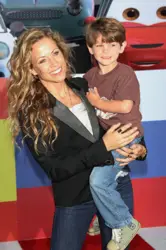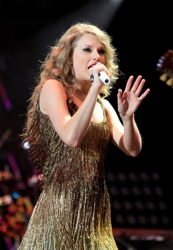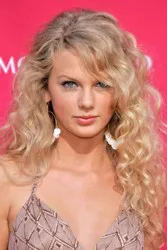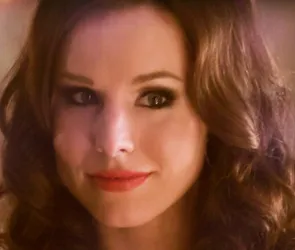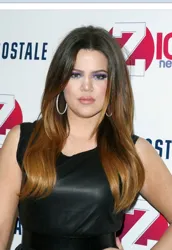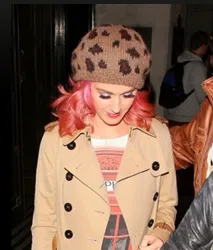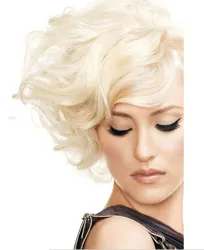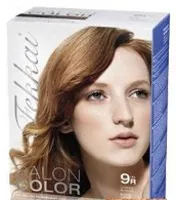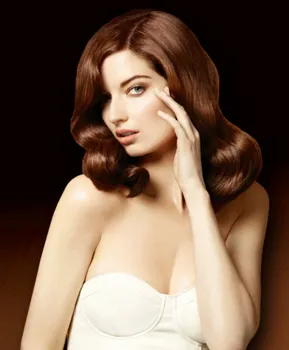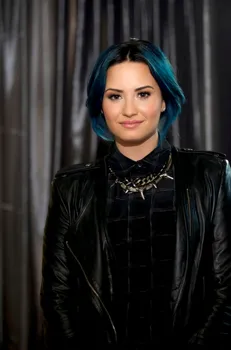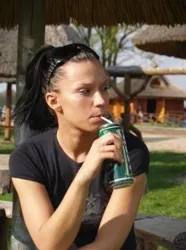
Curly Hair How To Color With Graduated Hues
Curly Hair How To Color With Graduated Hues
Naturally curly and wavy haired celebrities like Sheryl Crowe, Taylor Swift and Jennifer Nettles have been showing off the hottest hair color trends of the Summer months which is sexy graduated color.
What is graduated color? Although some professional colorists might have a more formal definition, graduated hair color is designed to gracefully graduate color from the roots through the mid-sections down to the roots.
Note: Rose Zuniga (214-755-5628) is a fabulous professional colorist in Dallas, Texas who has expertise with natural textures. She has been my own hair colorist for years and does amazing work on my naturally textured strands.
The purpose of graduated hair color is to give that look of "I've been at the beach all Summer" and my sun kissed tresses are started to grow out.
This type of hair color is most popular during Spring and Summer months because it does allow you to extend the time between highlights and low lights. And in the Summer months who doesn't want to wait longer in-between hair color visits?
Graduated Hair Color For All Hair Types
Graduated hair color is a deliberate hair color technique which can be applied to any type of hair from stick straight to naturally wavy, curly, kinky, coil infused or a combination of hair types.
Graduated Hair Color Versus Ombre Hair Color?
How does graduated hair color differ from Ombre color? In some regards they're the same except that with Ombre there is often a much longer growth line from the roots to the ends. With Ombre hair color it looks like you spent the Summer at the beach and didn't get your regrowth touched up at all.
With graduated color it looks like your hair has grown out just a little bit but with Ombre color it's grown out a lot.
Curly Hair How To Color
When it comes to successfully coloring curly hair whether a base color, highlights, low lights or graduated hues, it's all about proper color placement.
Which means ideally you should work with a professional hair colorist known for their skills with natural textures.
Why do you need a textured hair color expert? When it comes to naturally textured hair, it's not unusual to discover random sections of hair which are straight in one area of the head, but very curly, coil-y or wavy in others.
Apply Highlights and Low lights To Larger Sections Of Curls
When curly hair is colored, especially with high or low lights, larger sections of the curls have to be painted. The larger and thicker the section of target curs the better the chance the highlights will show up. This is not the case with stick straight or only slightly textured hair.
The mistake many hair colorists make is selecting small or thin sections. Finely painted highlights and weaves can easily get lost in a mass of curls, coils or kinks.
Will You Wear Your Hair Curly Or Straight?
Even before having naturally textured hair colored, highlighted or low lighted in any type of graduated color scheme it's important to decide whether the hair will be worn primarily curly or straight. If you plan on always wearing your hair curly the color scheme utilized should be different than if you wish to wear your hair straight.
If you wear your hair predominately curly don't let your hair colorist blow your hair straight and then do a color weave. The result may be a variety of different colors concentrated onto one curl which will look out of balance and not always attractive.
It's also important to have your colorist do a complete analysis of your texture pattern to create a plan for the best way to color your hair for spectacular results.
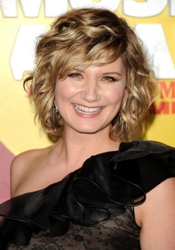 Baliage Is Perfect For Naturally Curly Hair
Baliage Is Perfect For Naturally Curly Hair
Baliage is a free hand hair-painting method which allows the colorist to place hues exactly where the sun might naturally color the strands.
Baliage is the best way to achieve the dark-to-light look and it can be created on large thick sections of curls. The color is applied randomly to each section or curls.
For the best results, the baliage application pattern should be tied to the trajectory of the natural curls and hair texture. For best results color should gently drop off from the crown with color painted on the fullest part of the curl in an unstructured method.
Baliage can seamlessly create graduated color on natural curls and can be combined with low lighting foils placed under the surface of the painted curls. This will create a peek-a-boo color scheme which creates a purposeful graduated color scheme for a chic natural grown-out look.
Listed below are some dos for creating graduated color on curly and naturally textured hair:
1. For graduated hues which are soft and natural with a more root-y diffused look, keep color away from the scalp.
2. Applied color should be subtle rather than obvious. Combine dark root-y looks with lighter mid-shafts and ends to encourage beautiful shimmer, shine and movement.3. Showcase undulating movement of textured hair by applying highlights and low lights in large ribbons throughout thick sections of curls or alternate with triangular slices and weaves.A great way to rock graduated color for both curly and straight styles is to have color painted in slices at an angle. As a result when your textured hair is worn straight the color will flow properly and avoid a blatant striped look.
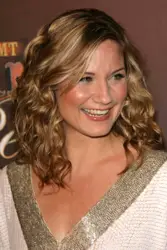 4. Ask your hair colorist to focus on proper product placement by utilizing different hues to achieve different the most natural results. Highlights and low lights applied to naturally textured hair should always be customized to work with the size, shape and texture of the hair.
4. Ask your hair colorist to focus on proper product placement by utilizing different hues to achieve different the most natural results. Highlights and low lights applied to naturally textured hair should always be customized to work with the size, shape and texture of the hair.5. Free hand hair color placement like baliage is usually most successful on naturally textured hair. Highlights and low lights applied on naturally textured hair should never follow the same application principles as those applied to straight hair.
6. Hair color should be custom painted with a brush which follows the natural shape of the curls. One option is to lightly trace the edge of some curls while applying more concentrated color to others.7. Color should always be placed where it will look best against the natural texture. Highlights and low lights should show dimension and movement.
8. Before having hair colored, highlighted or low lighted, have it styled to the way you will wear it predominately (curly, straight, wavy or a combination).9. Decide before coloring whether hair will be worn up on a regular basis. This should alter the hair coloring process.
10. If your hair is extremely curly ask your colorist to place darker shades on the outside of the curl so it provides an illusion of more compact curls. Darker shades applied on the outside with lighter hues interwoven throughout the interior and the ends will help minimize and decrease excessive curl size and volume. It tends to make the curls also look softer and less round.Demi Perm Color Versus High Lift Perm Or Bleach
11. Avoid too much contrast between the base color and highlights. When too much color contrast exists, natural texture may take on a look unattractive worms snaking throughout curls. Smaller color weaves may cause naturally textured hair to look wimpy, wispy and frizzy.
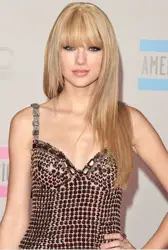 12. Product choice, may have a dramatic effect on heavily textured hair. A demi-permanent color is often best for use on extremely curly or highly textured hair. It is also best for frizzy hair. Ideally any color formulas utilized should offer conditioning properties to help control damage and frizz.
12. Product choice, may have a dramatic effect on heavily textured hair. A demi-permanent color is often best for use on extremely curly or highly textured hair. It is also best for frizzy hair. Ideally any color formulas utilized should offer conditioning properties to help control damage and frizz.13. Ask your colorist if they might try using a 10-volume developer on your curly hair. This will help to keep the hair in optimal condition and will not affect the natural texture as much.
14. Avoid bleach. Bleach tends to swell the hair and cause it to become dryer. Naturally textured hair is already susceptible to dryness, so it’s better to use high-lift permanent hair color, which tends to impart less damage.15. Never lift more than 1-2 levels or else naturally delicate curls and waves may look damaged and expose a rough cuticle encouraging dullness, frizz and split ends. The color used on the roots should vary 1-2 levels compared to what should be used on the mid shafts and ends.
16. Color formulas applied to curls and natural texture must be carefully monitored and adjusted since hot roots are a common challenge on curly hair.Summary
The key to successful color on curls and naturally textured hair is thoughtful placements. Curls and natural texture are unpredictable so you need to make sure your colorist enhances each and every curl, wave, coil and kink on your head.Social Media Network Information
Please follow us on Twitter at: https://Twitter.com/HairBoutique. I look forward to meeting new people from all walks of Twitter and learning from their Tweets.


